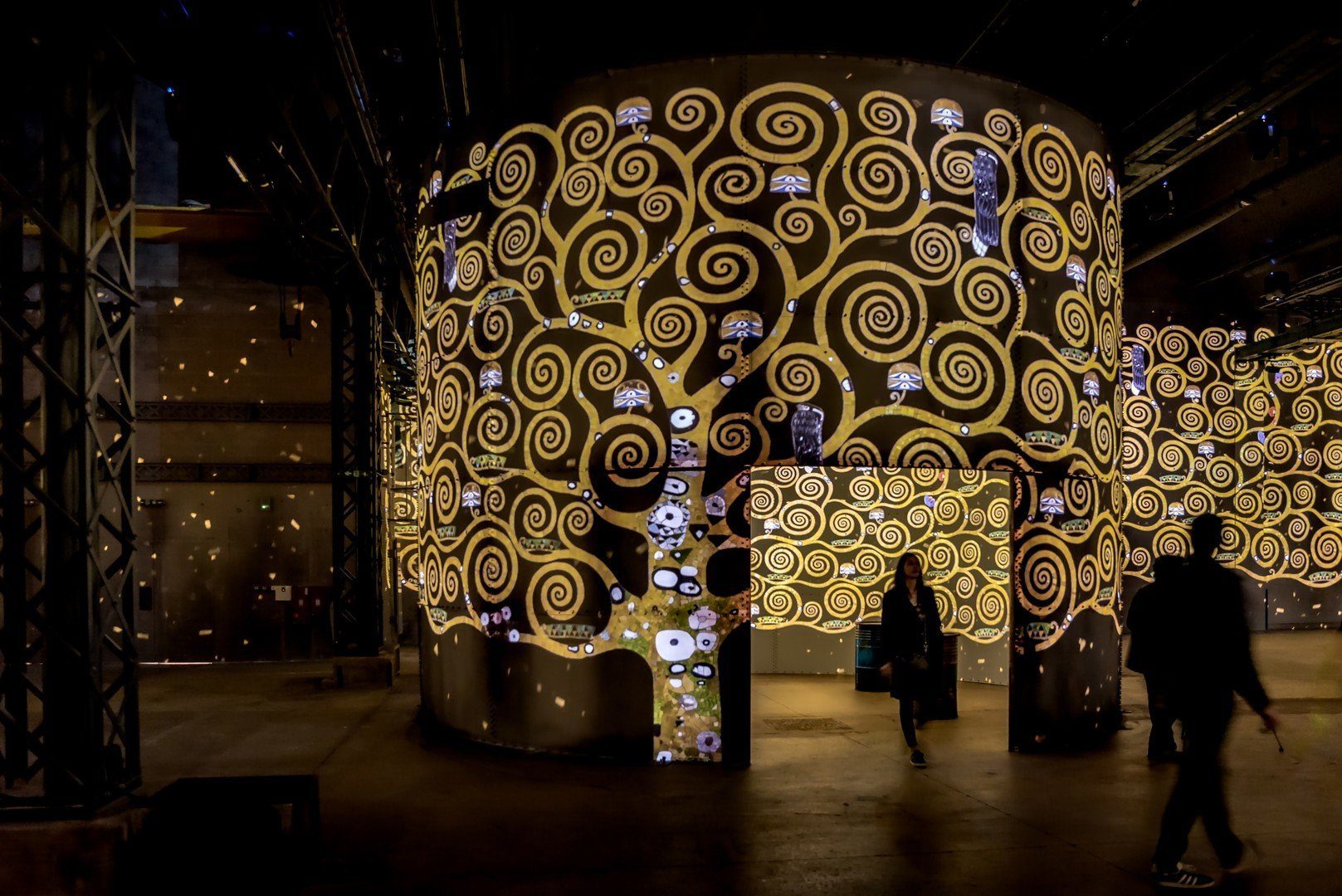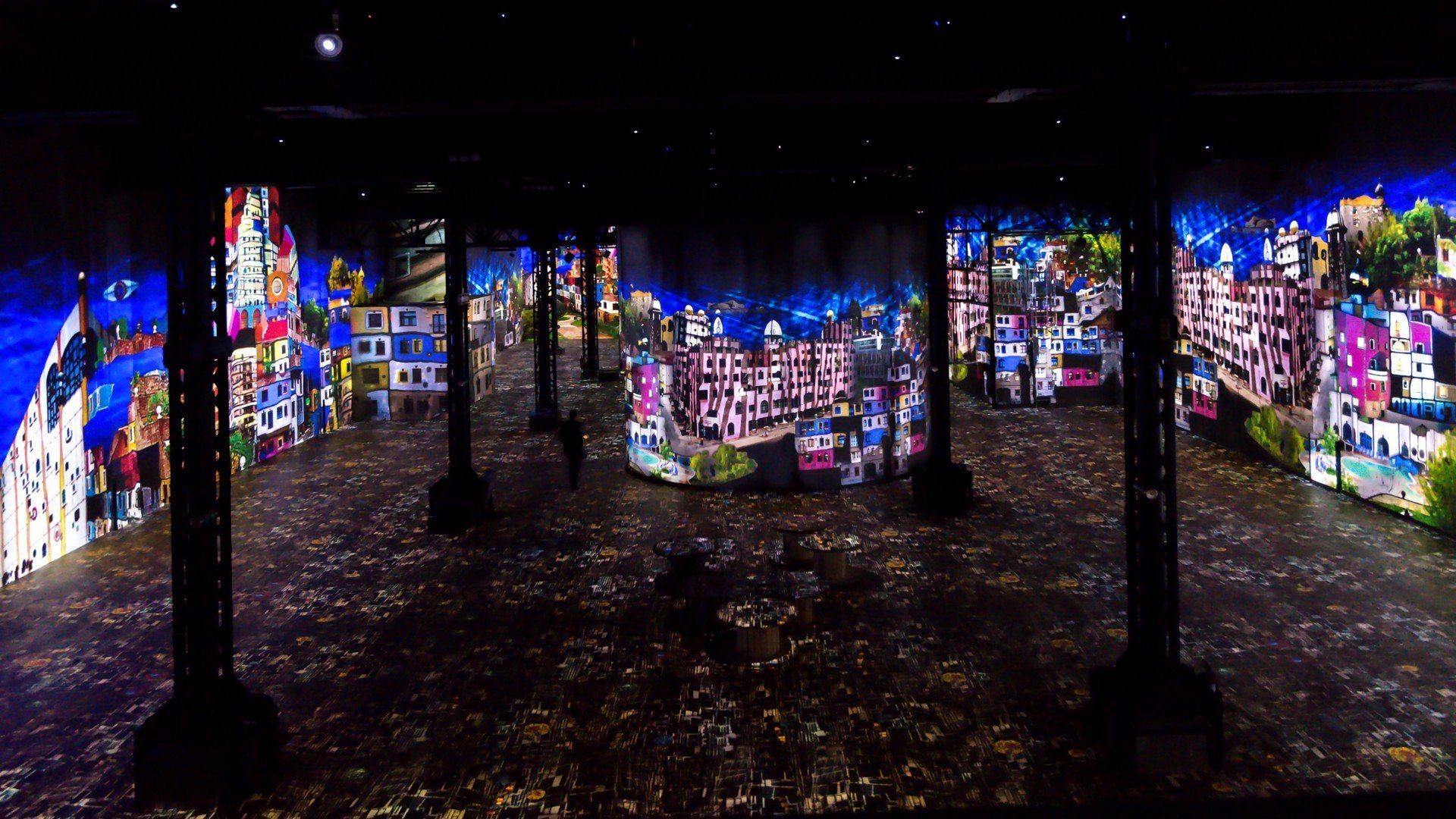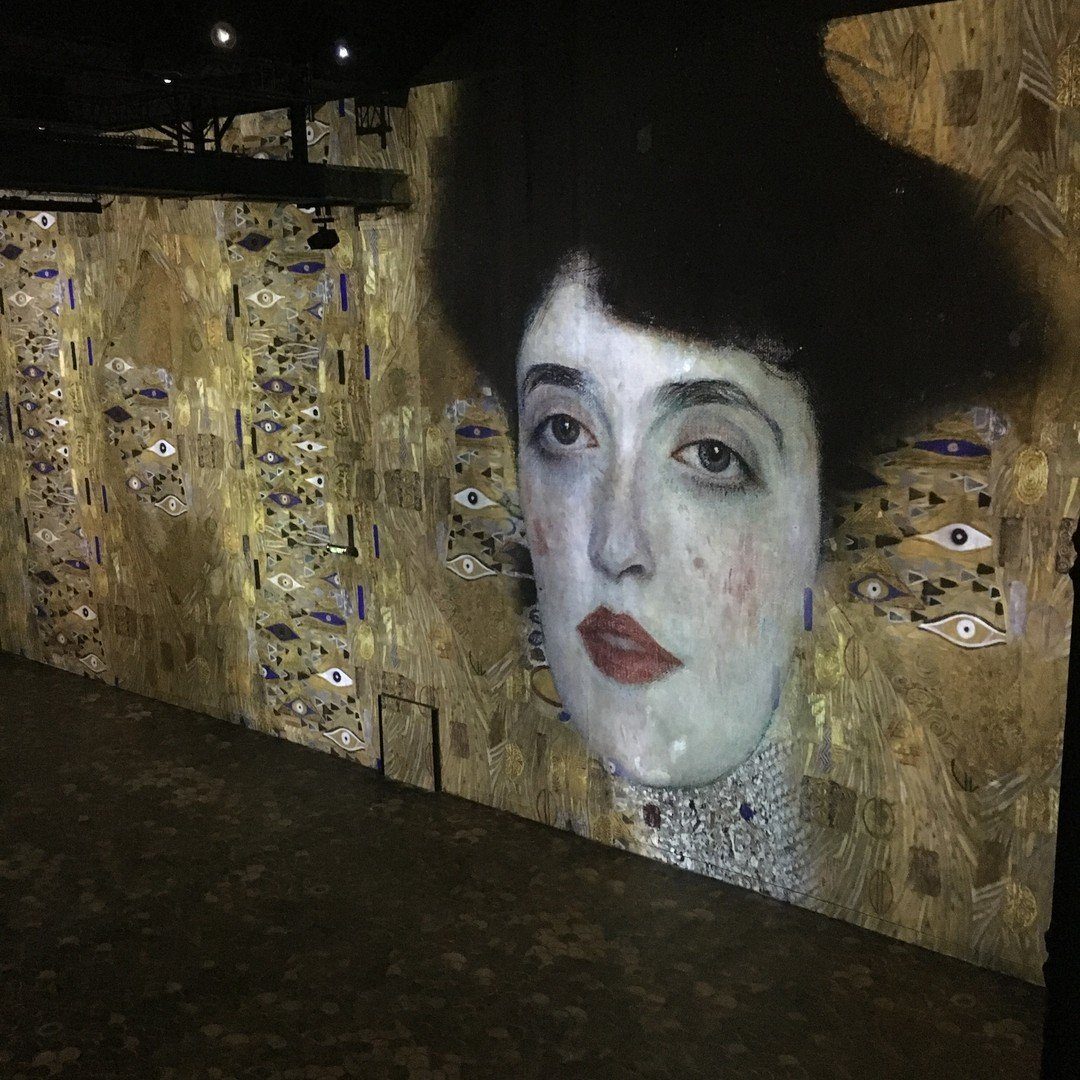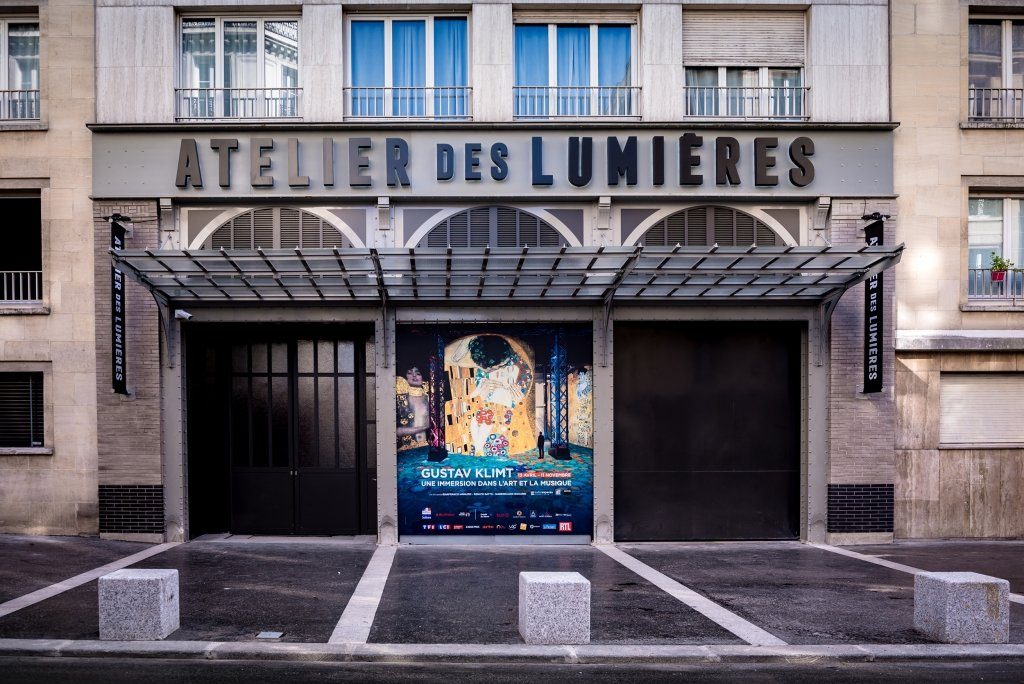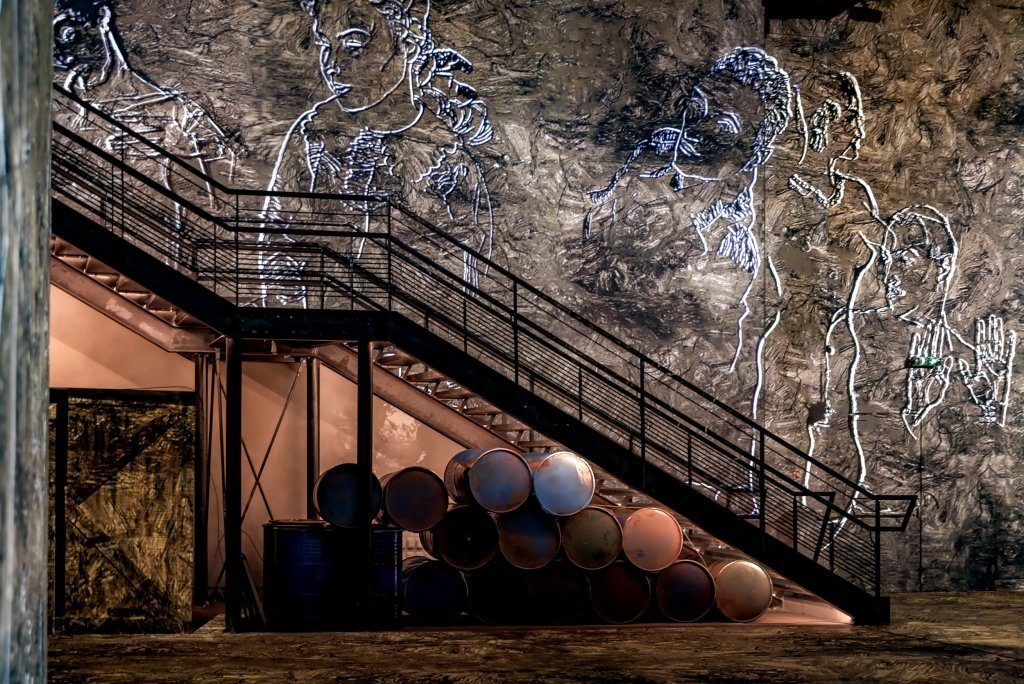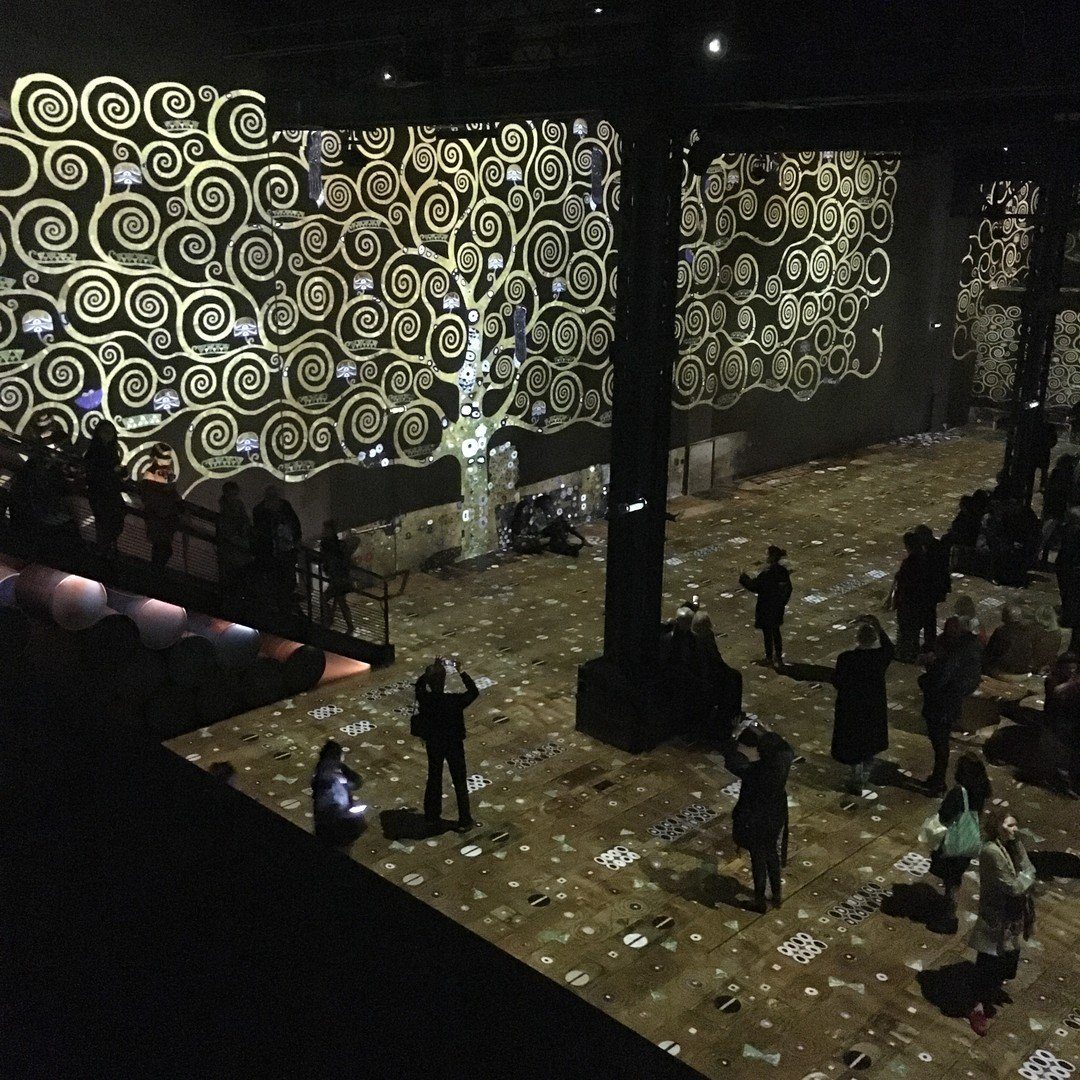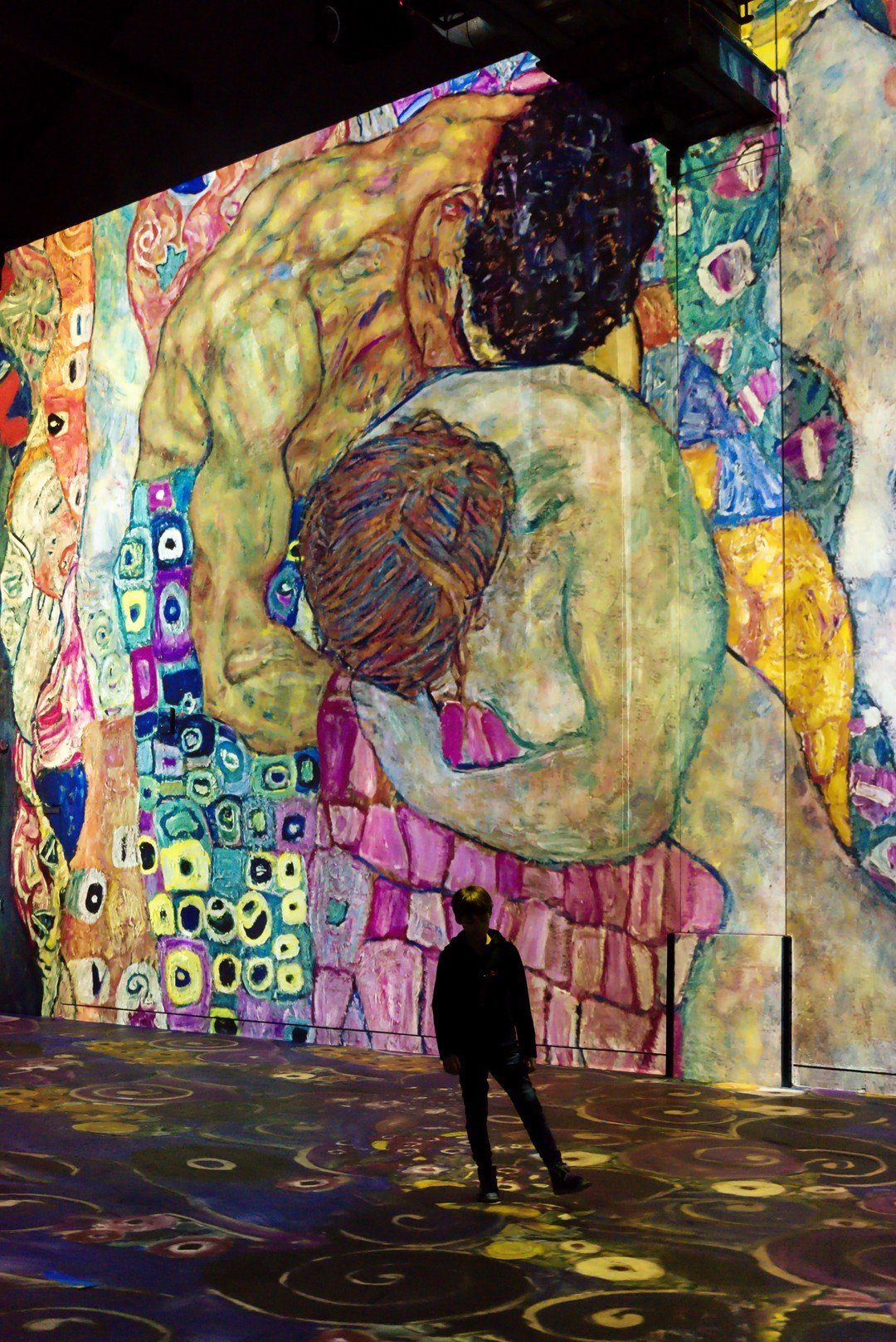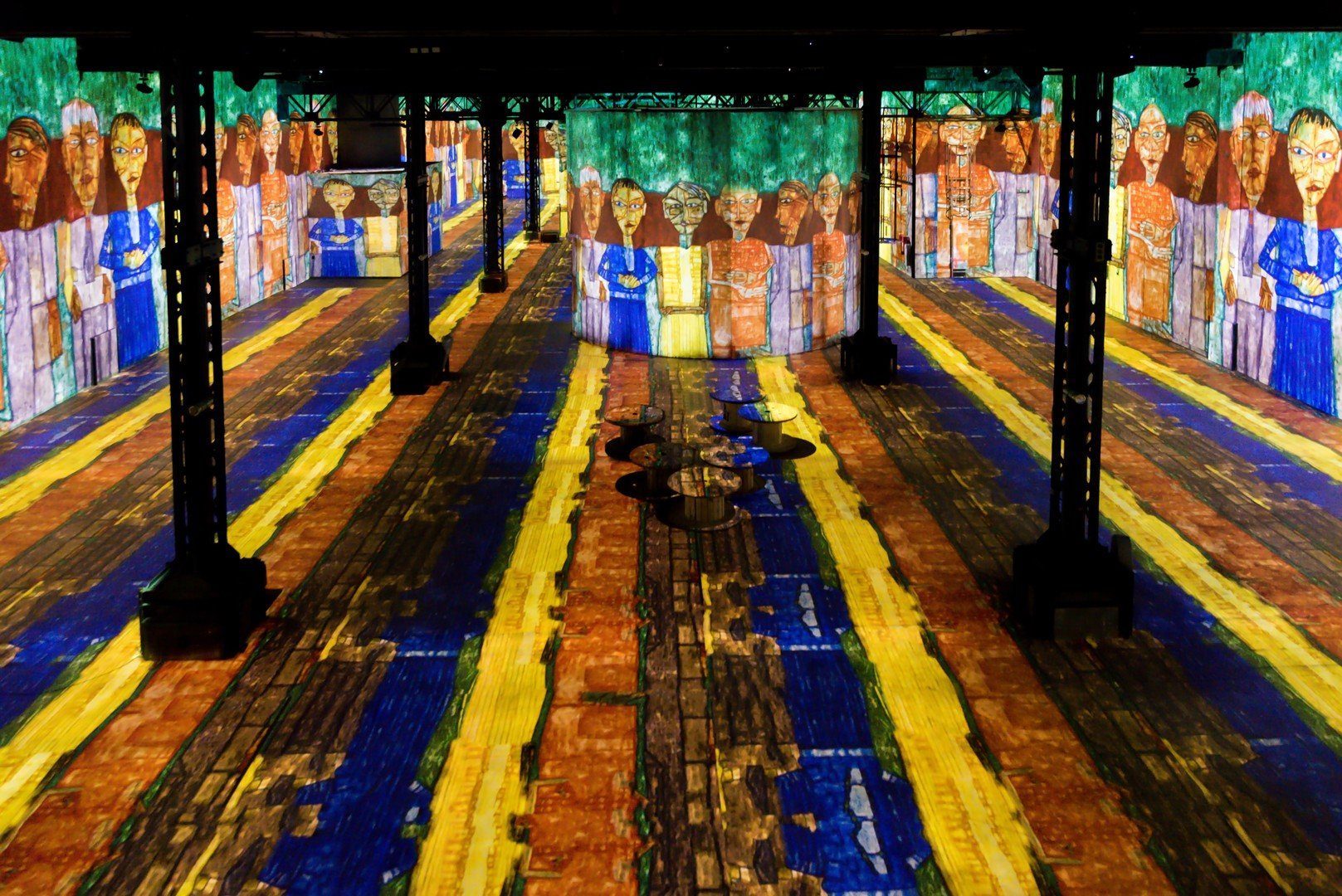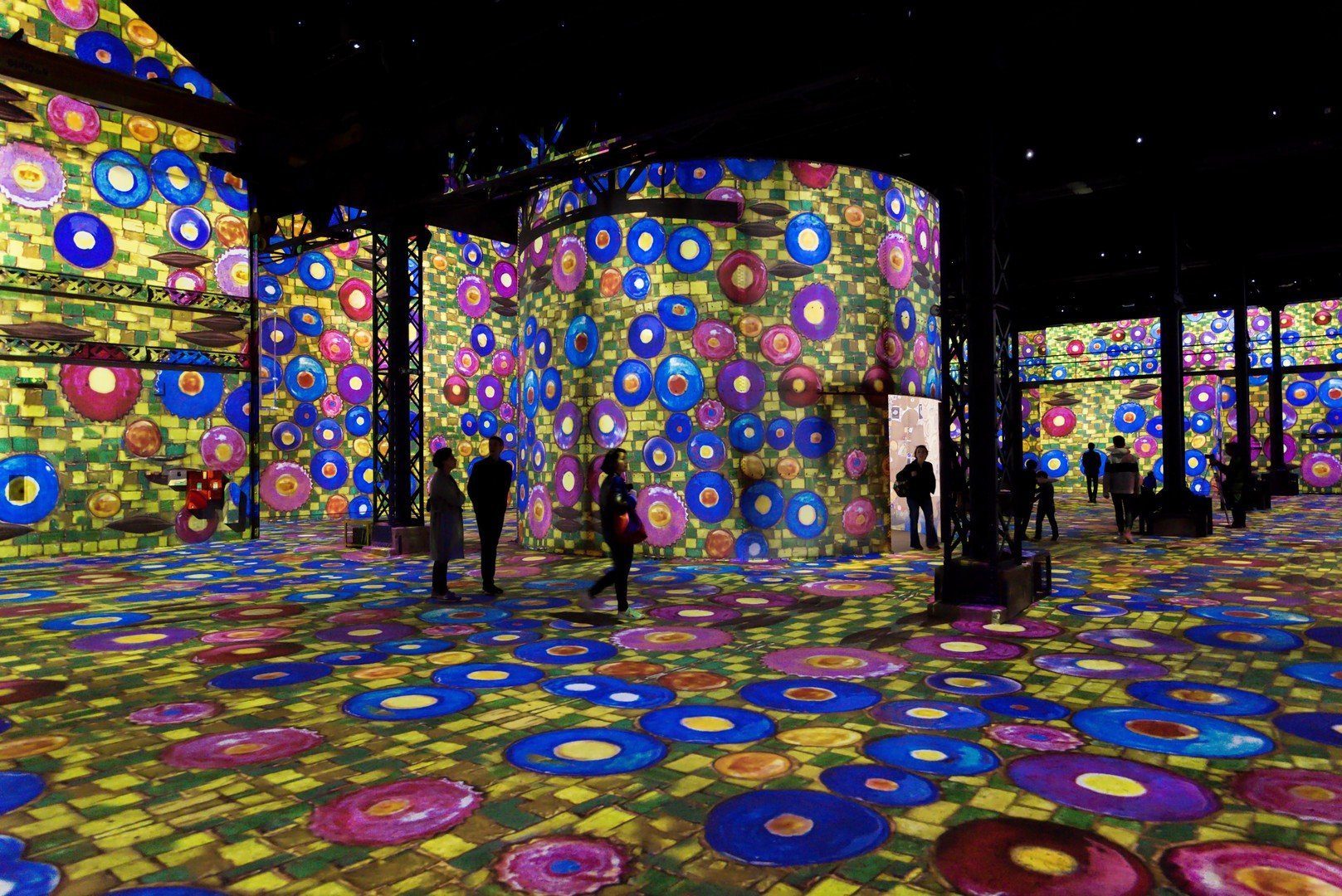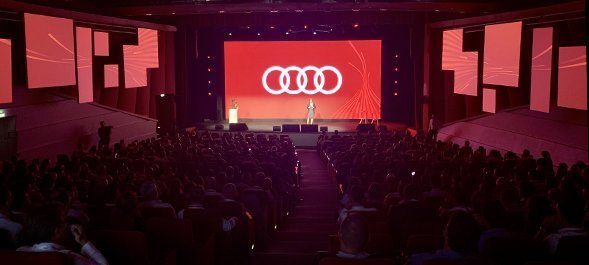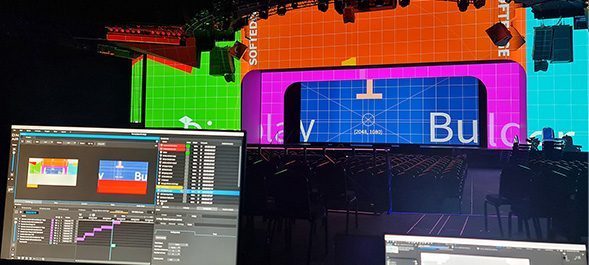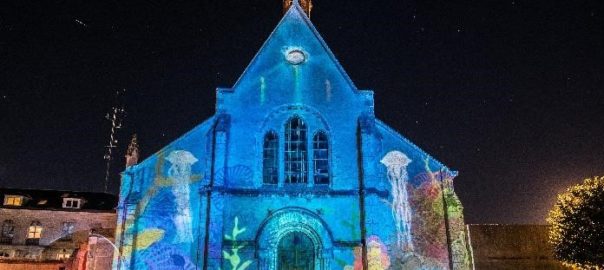AMIEX® concept by Culturespaces
Technical Production: AMIEX® Studio & Cadmos
Production: Gianfranco Iannuzzi – Renato Gatto – Massimiliano Siccardi
Music: Luca Longobardi
Atelier Des Lumières: A new way to discover art relying on Modulo Kinetic
April 2018, Paris – France
Opened on April 13, Atelier des Lumières, created by Culturespaces, is the very first Digital Art Centre in Paris. Its first exhibition is a fantastic immersive digital experience around Gustav Klimt’s work. A show that relies upon an impressive audiovisual set-up, with more than 130 x Barco video-projectors, as well as 35 x Modulo Kinetic media servers.
First Digital Art Centre
Culturespaces chose a 19th century disused foundry to establish the very first Digital Art Centre in
Paris: Atelier des Lumières. The 2,000 sqm venue received a complete make-over to allow the hosting of immersive digital art shows on a monumental scale.
Opened on April 13, Atelier des Lumières first exhibition around the work of Gustav Klimt is a stunning show, bringing together monumental projection and music for a new artistic experience.
Visitors are completely immersed into the work of the Austrian painter thanks to a massive AV setup: more than 130 Barco PGWU-62 video-projectors were installed together with 35 Modulo Kinetic media servers by Modulo Pi.
A fine-tuned show with spectacular results: animated images of Klimt’s work are projected on the floor, on the walls (who can reach up to 12m) as well as on the ceiling and other typical elements of the venue, such as the foundry’s former chimney. Images flow in rhythm to the music, and appear perfectly moulded to the Atelier’s architecture.
Faced with the technical challenge of equipping such a venue to achieve a 300 million pixels projection, Culturespaces and Cadmos, the integrator for the project, opted for Modulo Pi’s systems from the project study phase.
Relying on his experience with the Carrières de Lumières based in Les Baux-de-Provence, South of France, Augustin de Cointet de Fillain, Multimedia Project Director at Culturespeaces, explains: “We initiated this type of exhibition in 2012 in Les Baux-de-Provence. This was achieved with a lighter AV system since the remarkable venue was already doing the show. However, we quickly realized that we would need a system with much higher potential and stability.”
Roman Hatala, Cadmos’ Director, further adds: “When Culturespaces told us about Atelier des Lumières, opting for Modulo Pi’s systems was evident as they are the most effective and adaptive systems on the market. We wouldn’t have done this project without it.”
A technological upgrade
After choosing video-projectors with higher resolution for better image quality, the teams of Culturespaces decided to rely upon Modulo Pi’s solutions to better answer their requirements for Atelier des Lumières, but also for their upcoming installations in France and abroad: “We are dealing with installations based on 90 to 130 video-projectors, which is huge. Therefore, we needed a reliable, comprehensive and powerful system that would allow us to work from site to site.”
For its first exhibition, Atelier des Lumières offers a three-part work around paintings of Gustav Klimt, the vision of the artistic director, and the former foundry now hosting the Atelier. “The exhibition is tailor made to the venue”, explains Augustin de Cointet de Fillain.
It’s as much creation as it is staging, with a certain complexity due to the perspectives and different depth levels in the venue. In this context, you need a really flexible operating system.”
The 35 units of Modulo Kinetic showed their efficiency at every stage of the project. Augustin de Cointet de Fillain provides more details about the crucial role played by Modulo Pi’s media servers prior to setting up : “We load a 3D plan of the venue, fill in the type of video-projector we’ll be using and what we want for each wall in terms of image pixel size and luminosity. Then, the Modulo Kinetic tells us where the VPs should be positioned, what the image distortion will be, the luminosity rendering on each area… Once this simulation phase is done on Modulo Kinetic, we move on to the venue.”
When at the venue, the installation and fine-tuning stages – central to the immersive effect – are done so as to give the impression of projecting one single image over the whole surface. Among other things, Modulo Kinetic helped handle the overlaps and soft edges, and made warping easy with the Xmap mode. The result was a seamless projection over the entire show surface.
Installation and fine-tuning had to be done within a limited time frame as Roman Hatala explains: “The audiovisual work comes at the very end. That was a real challenge to have everything set up and adjusted while the renovation work of the venue was still going on.” In this context, the features offered by Modulo Kinetic, allowing several users to work on settings at the same time, was key: “Modulo Kinetic allows shared and mutualized work on geometry. It helped us save a great deal of time by having someone working on a wall on one side, a second person on another side, and a third person working on the floor. To achieve all the fine-tuning in a shortened time, that was a real advantage.”
A reliable and comprehensive show controller
Once the set-up was over, Modulo Kinetic was then used as a show controller to handle and sequence all media that are part of the show: videos, music, images,… “That is the true force of Modulo Kinetic. It’s a comprehensive system in which anything can be centralized and controlled: videos, lights, sound, and interactive lasers”, comments Augustin de Cointet de Fillain. “Without Modulo Kinetic, we would have had no choice but to manage a string of not very reliable different systems, multiplying the overall system’s fragilities. We needed a super stable system with full and permanent control. We cannot afford to have a huge black wall.”
To make everyday management and maintenance easier, Modulo Kinetic comes with an app that handles the shows through pre-programmed loops, while also giving regular feedbacks ensuring the overall AV system is operating accurately at all times.
The show control and remote maintenance system was programmed by Cadmos’ teams, who have been working with Modulo Pi’s media servers for several years: “Modulo Pi was the best choice for this project. Their systems bring reliability, scalability and an image quality that cannot be reach with any other system”, explains Roman Hatala. “In our museum and contemporary art projects, Modulo Pi’s media servers allow us to work with Apple ProRes or uncompressed contents for better image quality. We also enjoy the capability of integrating custom show control and management options so that our clients can benefit from fully controllable and autonomous systems.”
To pursue its mission of bringing to the public a new way to discover Art, Culturespaces is currently working on the launch of new immersive art exhibitions in the United States and Korea.
These new large-scale projects will also rely upon Modulo Kinetic for the simulation, set-up, show control and maintenance operations. “We were looking for a reliable partner for our upcoming projects, and it will be Modulo Pi”, states Augustin de Cointet de Fillain. “We confirmed that choice due to our requirements in terms of reliability, but also because these systems allow us to anticipate and transpose the creation of our upcoming exhibitions.”
An anticipation made possible thanks to a vignette system that enables to export and work with low definition versions of the media involved in each show. “It helps us anticipate future creations which is very important. This way, we don’t have to close our venues for too long. That gives us a very enjoyable anticipation base.”

